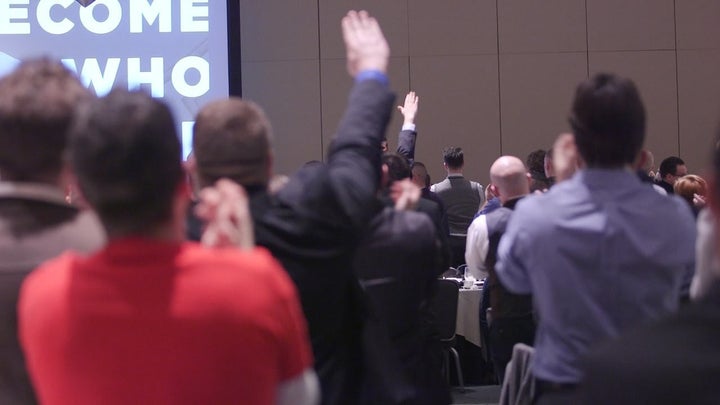Back in August, Hillary Clinton warned of a “radical fringe” taking over Republican Party politics in the United States.
Just a few months later, and fresh from his incredible election victory, Donald Trump was being forced to distance himself from a video showing a white nationalist with a neatly cropped “high and tight” haircut addressing a packed Washington conference hall who chillingly proclaimed:
“Hail Trump, hail our people, hail victory!”
If that wasn’t frightening enough, many of those in the crowd at the so-called ‘alt-right’ gathering then responded with Nazi salutes.
The meeting, which also bizarrely included former Vietnamese-American social media star Tila Tequila, soon caused consternation around the world and raised alarming questions about just who exactly was this shadowy group celebrating Trump’s victory.

Perhaps more worryingly, it took until Tuesday for the President-Elect to condemn the movement, which has grown in prominence following his campaign and election.
“I don’t want to energise the group, and I disavow the group,” Trump told reporters at the New York Times.
Although Trump said he did not feel responsible for energising white nationalists, parts of the alt-right might be forgiven for thinking they’ll have some sympathy from within the White House.
After all, just days earlier Trump had appointed Steve Bannon as his chief strategist and senior counsellor, a man who used to head Breitbart News which he proudly trumpeted as “the platform for the alt-right”.
![Twitter suspended Tila Tequila’s Twitter account after she attended the'alt-right' conference. The model posed for a photo in which she performed the Nazi salute. She then shared it on Twitter, writing 'Seig [sic] heil!'](https://img.huffingtonpost.com/asset/583874ee1a00000b03cc9c4b.png?ops=scalefit_720_noupscale)
In the brief time since the election, the term ‘alt-right’ has been the subject of a plethora of debates, op-eds and analyses - yet it still escapes solid definition.
The Huffington Post UK has taken a look deep inside the movement, its main ideas, people, platforms and associated fringe groups.
(Article contains content some may find offensive).
